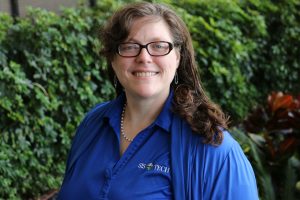Chemical processing is an industrial activity that involves using, storing, manufacturing, handling, or moving chemicals. The process can be designed using inherently safer strategies to ensure safe operation under foreseen process upsets. An example of an inherently safer practice is to design a vessel to withstand the maximum and minimum operating conditions that exist under emergency operation. When the process is not designed to withstand emergency operation, process safety is achieved through implementation of safeguards, which act when the process conditions become dangerous. Internationally, safeguards are maintained under a program referred to as functional safety management.
The owner/operator of the process has the responsibility to determine and document that the process is designed, maintained, inspected, tested, and operating in a safe manner, regardless of the means used to achieve safety. Safe operation of chemical processes is demonstrated through the data records and information gathered to comply with process safety management program. The risk of unsafe operation can be lowered by leveraging the inherently safer strategies throughout the entire design, including the safeguard design.
Many types of equipment are implemented as safeguards within the process industry. Sustainability of safeguards can be significantly different, even when they are designed and managed to provide similar risk reduction. Automated systems, whether in manual or automatic mode, are complex systems where many different devices must work successfully to achieve the desired functionality.
The process control system, safety alarm system, and safety instrumented system (SIS) can achieve similar risk reduction, but the resilience of the SIS to human error is higher due to its more rigorous design, verification, and validation processes. A pressure relief valve and a check valve are both mechanical devices, yet the pressure relief valve has a more sustainable level of risk reduction in service than a check valve. Choosing protection layers that are more resilient to human error is an inherently safer practice. When manual operator actions are required, training with real-time simulators can yield faster troubleshooting, higher response effectiveness, and safer operation.
Safeguards are designed and managed using a safety lifecycle, which includes a myriad of activities, intended to identify and eliminate human errors. Many different skill sets and planned activities are needed to ensure that the safeguards work as desired when required. These activities include competency assessment, verifications, functional safety assessments, configuration management, management of change, audits, and metrics. Keeping up with all these activities and maintaining the necessary documentation requires a strong safety culture that cares about safeguard reliability. Sustaining attention on the numerous details associated with instrumented safeguard performance is a significant challenge.
Automation is undergoing a massive step-change that will take many years to become widely adopted. The latest architectures are IT networks that rely on countermeasures to secure increasingly open communication between plant automation and the outside world. Interconnectivity is highly desirable, but introduces sources of human error and cybersecurity risks that did not exist 20 years ago. “The way things are done” may not be good enough when practices haven’t kept up with technology change. Documentation, procedures, and training must evolve to keep up.
A new book by the Center for Chemical Process Safety, Guidelines for Safe Automation of Chemical Processes, was edited by SIS-TECH Solutions’ staff and is now available from retailers. The equipment installed for process control and safeguard applications often looks the same, and in many cases is the same technology. However, there are significant differences in their functional objectives and in the level of detail needed in the front-line procedures to achieve the required reliability. The book contains practical considerations on the design and management of both process control and instrumented safeguards.







